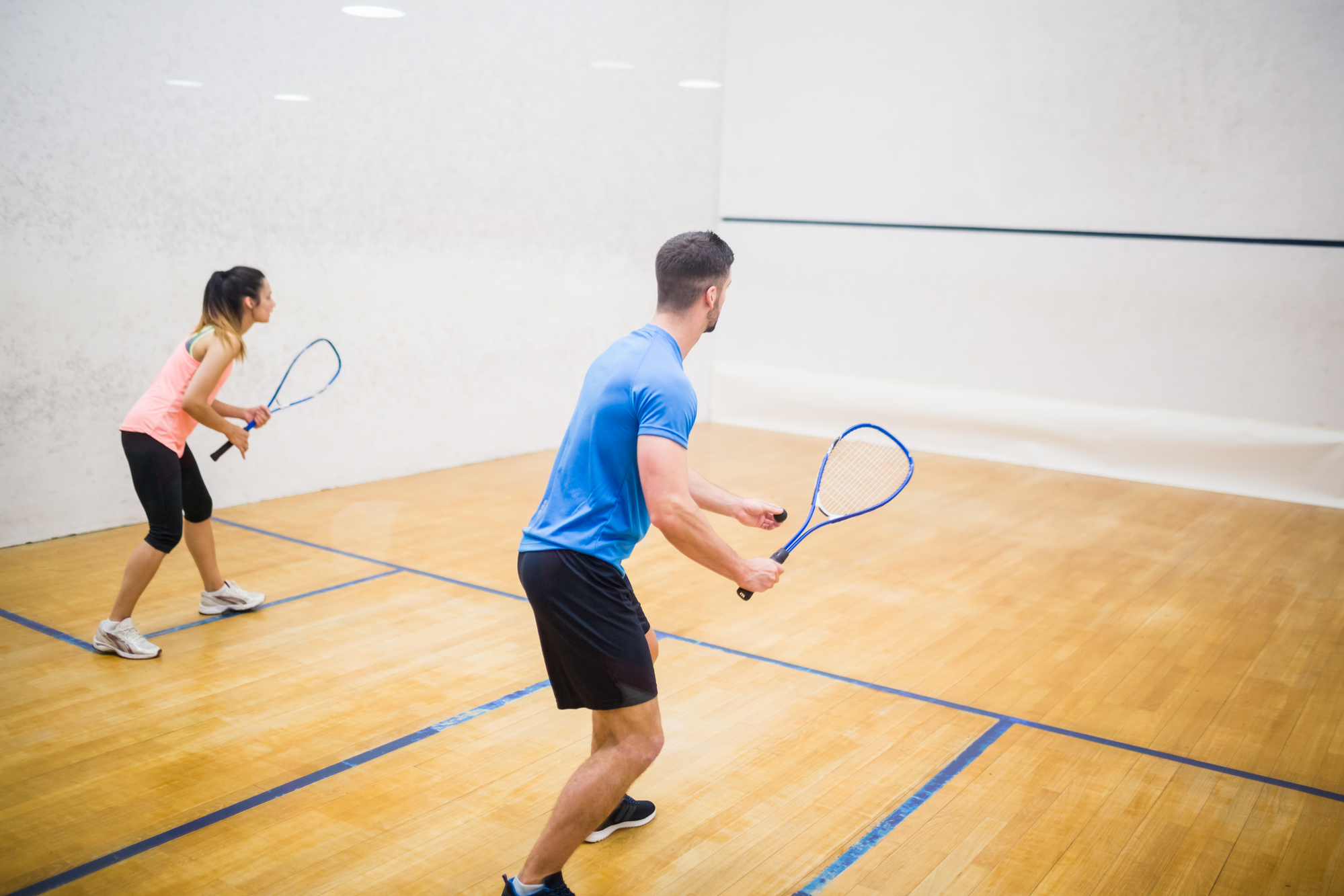The game of squash has a cultural and social history rivaling any of the more “old” and traditional sports like rugby. Squash has been played for over 140 years but has grown rapidly in the last forty.
Most people would think that it has tennis as its roots, but it is not some simple variation of tennis or new-fangled idea thought up by tennis players who wanted to add a fast paced and multidimensional aspect to the game. No – squash has a very particular and great back story.
In the year 1148, the French played “la Paume”, which meant “the palm of the hand”, which was then developed into Jeu de Paume, Real Tennis, Royal Tennis or simply Tennis.
In France, around the twelfth century, many boys and girls played ball games in the narrow streets of towns. They would actually "slap" the ball along the awnings or roofs with the balls bouncing off various structures and even into shop and door openings.
The Rules would change town by town. After a time, these ball games migrated even into the old monasteries. The sound of the ball could be heard slapping back and forth in the courtyard with their gloved hands. The balls were not the spongy, springy rubber globes as they are today.
Monks later added webbing on the gloves, after which they were able to extend their hand by picking up a stick or branch.
By the end of the fifteenth century, the Dutch invented the racquet. This ball game did go on to be called tennis. It did become the national sport of a dozen European nations and then out to the “colonies” (like the USA and Australia).
But the game of hitting a ball with a stub racquet or your hand continued to evolve and change – looking back to those days of the ball bouncing madly and somewhat unpredictably off unusual surfaces.
In 1830, some boys from Harrow School outside London ignited the beginning of squash proper by combining rackets and the hand).
“The Corner”, a popular area in the school grounds, was used as a “court” with two side walls and a front wall with a reinforced wall. This street and school grounds game required fast reactions and split-second decisions. The ball went off in all sorts of crazy trajectories which and bounced off drainpipes, chimneys, ledges and window frames.
The Harrow students used a rubber ball which “squashed” against the wall when it was hit. The boys decided to slice off the end grip of their racquets so they could play slower and easier game. They then named it “baby racquets” or “soft racquets”. This boys’ yard game became a game today which is now called SQUASH.
Squash continued to develop further with changes in court width and length, materials as well as the rules of the game.
Squash in Great Britain started without any real official standards. Great Britain formally created their squash standards in 1923, but squash in America had been played under a different standard for two decades. In the U.S., squash courts were built in universities, clubs, and even at home.
Squash Tennis USA style is one of the few racquets and ball indoor sports that can be termed strictly "American" in origin (whereas Squash Racquets has its roots in England). The game spread to America in the 1880s and the first real organized Squash Racquets play in the USA was in 1882 at St. Paul's Prep School, in Concord, New Hampshire.
Over time in the, USA, an exciting offspring was born called "Squash Tennis."
In the last decade of the 1800s saw two Squash games being played. However, Squash Tennis became more popular and widely played in the USA over Squash Racquets because of a more exciting pace and action of the play.
As well several private courts were constructed on estates owned by such millionaires as William C. Whitney and J. P. Morgan.
The Tuxedo Club, in New York, constructed the first official Club court in 1898. By 1905, the Racquet and Tennis Club, Harvard, Princeton, and Columbia Clubs in Manhattan had courts, as did Brooklyn's Crescent.
The onset of World War II saw the death squash ball because of the shortage of rubber. At the same time, Squash Racquets thrived during the War.
Competitions were established at service bases, colleges, schools which mean a new breed of young, active Americans became addicted to Squash Racquets. Even the Titanic had a squash court in 1912.
As the 20th century drew to an end, professional Squash was still dominated by countries like England, Australia, and Canada.
A new player arrived on the scene as well, Ahmed Barada from Egypt joined the ranks. On the women’s front, the WISPA rankings were still dominated by England, Australia, and New Zealand. Sarah Fitz-Gerald, Carol Owens, Cassie Jackman and Leilani Joyce (Rorani) were regular ranked players,
Men's squash in Egypt and France came forward and by 2009 Amr Shabana, Ramy Ashour, and Karim Darwish where the top of the list for Egypt. In the women’s rankings, new talent emerged with Malaysia’s Nicol David and Vanessa Atkinson of Netherlands, the Grinham sisters from Australia and Natalie Grainger of USA.
Squash and the Olympic Games
Squash made its first bid to be included in the Olympics in Barcelona Games in 1992 and Atlanta in 1996, Sydney in 2000, Athens in 2004 and Beijing in 2008.
A formal bid process was put in place for selection for the 2012 Games; Five sports, including Squash, were selected, but Squash failed to secure the two-thirds majority necessary.
For the 2016 games, Squash lost again to to golf and Rugby7s.
The bid process is underway for the 2020 Olympic Games, with one place available and squash Squash is poised to gain its overdue admission to the most prestigious event in world sport.
Globally there is an estimated 50,000+ squash courts in 185 countries. England had the greatest number at 8,500. There are an estimated 20 million squash players worldwide.
This history shows that squash has evolved like most sports into a global game of speed and thrilling action. Yes, it is true that looking back to the old days it was a game of young boys.
In the 1970s and 1980s, teenage boys would play squash typically on a Saturday morning. But for the future of squash to be bright, we need to get that excitement back for the youngsters again and as the community realize more and more through education - movement is vital for a long and healthy life.
Attracting young players is one of the keys to the future of squash as a game for a broad spectrum of players - in both age and gender.


